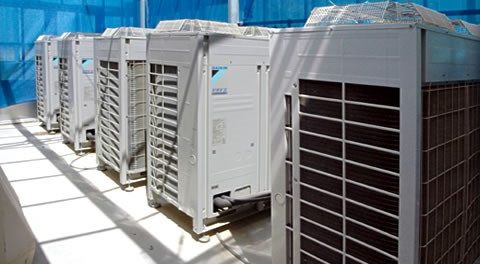
As heat pumps become the generally preferred source of low carbon heat on developments with heat networks, the type of heat pump selected will be crucial for the success of the project. One of the key differences between them is the refrigerant used. There are various types of refrigerants, from natural to synthetic. Typically used in the context of heat networks are CO2 and hydrocarbon (usually propane). Ammonia heat pumps are more common in industrial context due to ammonia’s toxicity risk.
Temperature
Due to their thermodynamic properties, refrigerants perform best at well-defined temperature and pressure intervals. Propane heat pumps can achieve 60-65°C flow temperature and can operate with a relatively wide range of return temperatures. This makes them a good candidate for 4th and 5th generation networks.
CO2 heat pumps can achieve higher output temperatures (up to 90°C) but are limited to return temperatures lower than 40°C. This limitation puts a great emphasis on the design, commissioning and operation of the network because failing to achieve low returns can result in significantly reduced heat pump contribution. In other words, it is the operational temperature that matters; therefore, all parties must be confident that low returns will be permanently achieved (and not just on average!).
Cost
There is no meaningful difference in capex between both types of heat pumps.
Fire Risk
One common concern about hydrocarbon heat pumps is the flammability and explosiveness of the refrigerant. This risk can usually be mitigated to acceptable levels via design. Manufacturers adopt solutions as leak detection and volt-free contacts to minimize risk.
Other risks include the pressure the refrigerant is subject to, which is much higher in CO2 than it is in hydrocarbon units.
Performance level
There is no meaningful difference in seasonal performance between both types of heat pump.
Spatial Requirements
There is no meaningful difference in spatial requirements between both types of heat pump (although some variation exists between manufacturers).
Posted on March 27th, 2024
Author: Igor Esteves
Related services: Planning Policy & Zero Carbon, Heat Network Performance Evaluation,